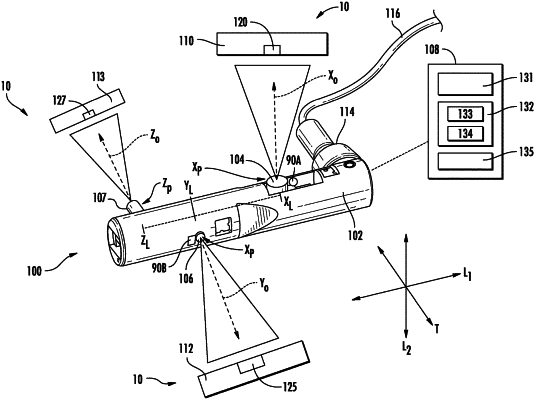| CPC F01D 21/003 (2013.01) [G01M 15/14 (2013.01); G06T 7/001 (2013.01); G06T 7/60 (2013.01); F05D 2260/80 (2013.01); F05D 2270/8041 (2013.01); G06T 2207/30164 (2013.01)] | 18 Claims |

|
1. A tool assembly comprising:
an elongated body, the elongated body defines a local longitudinal direction, a latitudinal direction, and a transverse direction;
a first camera fixed to the elongated body at a first location and having a first orientation relative to the elongated body;
a second camera fixed to the elongated body at a second location spaced a known spatial distance from the first location and having a second orientation relative to the elongated body, the first orientation defines an angle with the second orientation relative to a plane defined by the latitudinal direction and the transverse direction greater than zero and less than 360 degrees; and
a controller in operative communication with the first camera and the second camera, the controller being configured to:
receive data indicative of one or more images of a reference feature from the first camera;
determine data indicative of a first spatial position of the first camera based at least in part on the received data indicative of the one or more images of the reference feature;
determine data indicative of a second spatial position of the second camera based on a known spatial relationship between the first location and the second location; and
receive data indicative of one or more images of a target feature using the second camera,
wherein the first camera and the second camera being simultaneously in view of the reference feature and the target feature, respectively, and the target feature not being in view of the first camera.
|